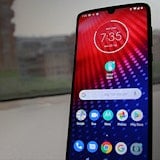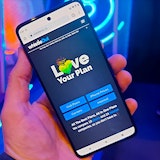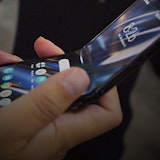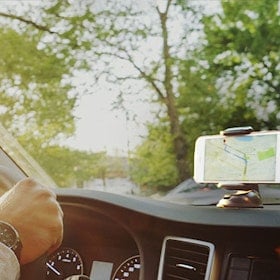
Either today or yesterday, depending on where you are, marks the 40th birthday of the cell phone. On the 3rd of April 1973 Motorola Engineer Martin Cooper made the first successful public call from a cell phone, officially kicking off what was not known then, but clear as day in hindsight, one of the many technological revolutions that would change the world. In case you were wondering, the recipient of Cooper’s inaugural call was Joe Engel, his direct competitor and head of research at Bell Labs, thus making it one of the bigger “in your face” jabs in tech history.
The cell phone on which Martin made the call weighed 2.5 pounds (1.1Kg) and had battery power of a whopping 20 minutes.
It would take a further 10 years for the first cell phone to be made available to the public: the Motorola DynaTAC 8000x. It had 20 (huge) buttons, a long rubber antenna and 50% more battery life than the original prototype, coming in with a full half hour of power. One small down-side of the DynaTAC 8000x was that, despite its massive battery life, it took ten hours to charge.
10 years after that, in 1993, Apple released the Newton personal digital assistant (PDA). This may seem unimportant until one realises that the Newton offered the first commercial text messaging service in America. It’s kind of weird to think of cell phones without text messaging. SMS is so popular in society these days that its hastily thrown-together faux-spellings have dug out their own place in other forms of textual communication like IM and email. SMS is now so prolific that in 2012 a study showed that, within the US alone, around 6 billion text messages are sent each day, every single one of which can trace its fleeting existence back to the Newton PDA.
In 1996 the first flip-phone hit the market, followed in 2002 by a much more lasting development: the first cell phone with a built in camera. These early models were barely more than a novelty, as anyone who ever owned one can attest, but once again from small beginnings come society-changing events. Instagram, imgur, flickr, facebook, even YouTube and a huge number of other services that have embedded themselves so far within mainstream culture that their removal would probably spark riots (or perhaps just a competitor clone to take their place) would either be non-existent or a shadow of their current selves were camera phones not as abundant and of high quality as they have become.
Jump to 2003 and we have the first BlackBerry. While the BlackBerry wasn’t really the first smartphone, it was definitely a catalyst for the popularity and desire for a phone that did more than just text, call and take terrible photos. BlackBerries were seen as luxuries at first, but quickly became iconic in the minds of the consuming public.
In 2007 the smartphone game was reshaped again with the release of Apple’s very first iPhone. The iPhone, or iPhone 2G as it is often retrospectively called, set the bar for smartphones and to this day is still the standard by which all other smartphones are measured. Its magic capacitive screen and tileset interface truly were revolutionary and, while Apple may often be accused of stagnation in UI these days, no one can really deny the impact and innovation behind the first iPhone.
Jump to today and we have 1080p touchscreen smartphones with 4G internet connections, incredibly good cameras, gigabytes of storage, 2GB of RAM and quad, or even octo-core 1.5GHz processors. Just the processor alone is an incredible development. In 1976, just 3 years after Cooper’s historic call, the Cray 1 supercomputer was unveiled with its, at the time, whopping single-core 80MHz (1GHz = 1000MHz) of raw power. Of course CPU power is never directly comparable, but hopefully you get the picture.
In 40 years we’ve gone from a 2.5 pound, probably radioactive, phone with 20 minutes of battery power that took 10 hours to charge to, well, the world in the palm of a hand.
Happy 40th birthday, cell phones. We know you get a bad rap sometimes, but we’re sure as hell glad you’re around and we’re very proud of how far you’ve come in just a few short decades.
Related Articles
Find Better Phones and Plans
Hundreds of cell phone plans unpacked. All the facts. No surprises.







































